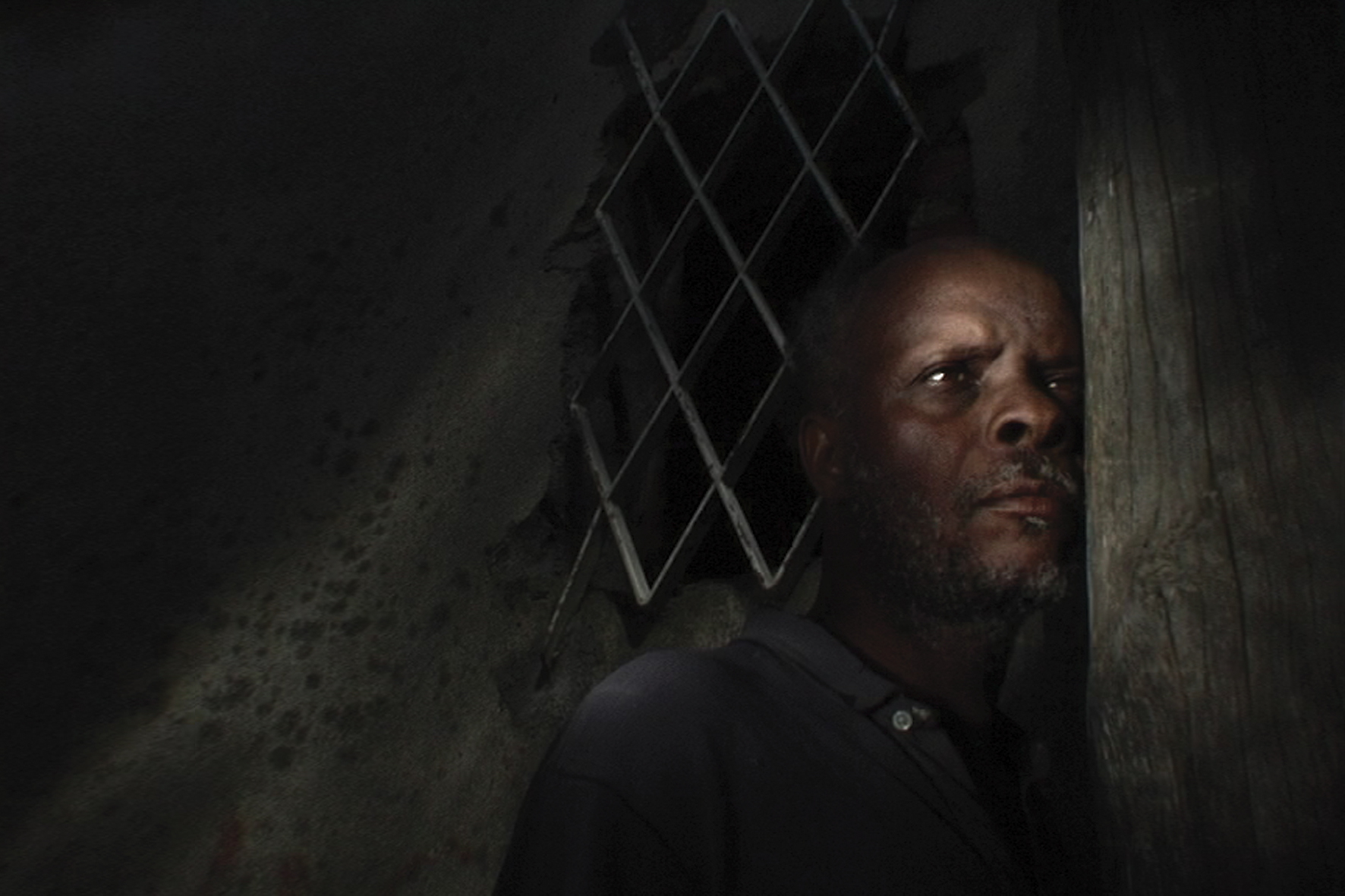
By Jacques Rancière
Originally published as ‘La Lettre de Ventura’ in Trafic #61, spring 2007. Pedro Costa will participate in the next DISSENT! session in February 2013.
A change in dimensions: this is how we could sum up the novelty of Colossal Youth, the third and most beautiful film of the trilogy that Pedro Costa has dedicated to the inhabitants of the shanty town of Fontainhas, which has now been destroyed. In the beginning, there are high walls with grey metallic hues glistening in the half-light. We see objects passing through a window before crashing on the ground. In the next shot, a woman stands beneath us, appearing as an ancient fury, holding a knife that also seems to serve as a torch, lighting up the dark. She speaks, like one recites a monologue, to recount how she, when still a child in Cape Verde, would go in the water without fear of sharks and without responding to the boys on the shore, who would carefully mutter words of love. Before long the two sequences will find their “explanation”: the woman, Clothilde, has put her husband, the old construction worker Ventura, at the door, and thrown his furniture out of the window. But this is not the essential thing: it is rather to be found in the space constructed by this ouverture, in the tonality that it brings to the story. We are apparently very far from the space and the characters of In Vanda’s Room. In this film, the camera edged its way through the maze of small streets, finding shelter in the corners of narrow rooms, dwelling at the height of its characters, who were half asphyxiated, discussing their lives inbetween two doses of drugs. Here the space has opened up, the camera aimed at the top of this high walled building that looks like some ancient or medieval fortress and from where this woman appears, with a savage appearance, a noble way of talking, and a theatrical intonation that brings to mind Clytemnestra or Medea. Ossos and In Vanda’s Room presented us with young marginals sorting out their lives day by day. Colossal Youth is built around two mythological figures coming from far away, from the dawn of time. First of all Clotilde, who we won’t see anymore, but who continues to haunt the words of the chased away husband, who asks his large family for a place to stay and at one point tells his “daughter” Bete how he had tamed the wild child one independence day when she had (falsely) sung a hymn to liberty; then there’s Ventura, figure of a fallen lord, as if exiled from his African kingship, having become unfit to work due to an injury and unfit for social life due to a head fracture. Sort of a sublime wanderer, inbetween Oedipus en Lear, but also between the Fordian heroes Tom Joad and Ethan Edwards.
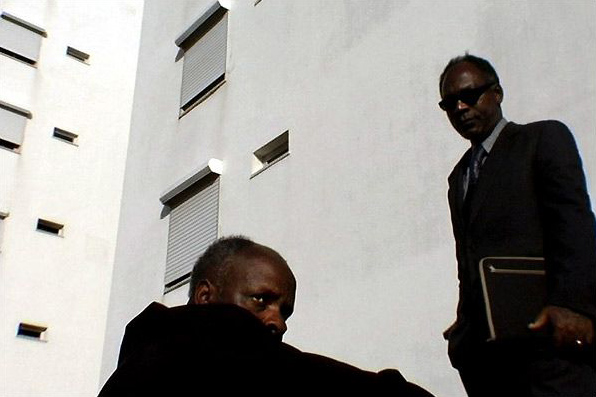
Tragedy has thus invaded the domain of the chronicle. In Vanda’s Room struggled, shot after shot, to release the poetic potential of the sordid decor and the smothered speech of wasted lives, to reconcile, beyond every form of esthetisation of misery, the artistic potentialities of a space with the capacities of the most displaced individuals to regain their own destiny. Its emblematic image was given by this episode where one of the three squatters persisted, out of an esthetical concern, to scrape away the stains from a table destined to be squashed by the jaws of the demolition machines. But the figure of Ventura straightaway resolves the problem: here there is no misery to be elevated by the camera. Between the camera and Vanda, now a mother revalidating from detoxication, or Nurro, who has become an honorable employee, intercedes Ventura, figure of tragic destiny, standing out from the white walls of new appartement buildings and the images of televison series. He is not a disabled unemployed whose difficult reintegration we get to follow, but a prince in exile precisely refusing all “social” rehabilitation. This is strikingly illustrated by two episodes of the film, two incursions of Ventura in a space where he is displaced, two confrontations with blood brothers who have played the game of integration. First the visit to the new apartment where the municipal office worker, in front of the window, lists up the advantages that the cultural and sports facilities in the area provide to Ventura’s “wife” and “children”. Ventura, dark silhouet with his back turned to us, slowly lifts a majestic arm towards the ceiling: “there are spiders everywhere”, he simply says. With one gesture the relation between the social housing administrator and the obligee is turned around. In his attitude, the old builder has mobilized the two sciences separated by tradition: the art of means, the mechanical art of the building constructor, and the art of ends, the art of one who knows how to inhabit the buildings. The white uninhabitable walls overflown with the noise of Vanda’s television are in contrast with the grey walls of this shanty where Bete – who hasn’t moved yet – and Ventura, with his head on the knees of his “daughter”, decipher the fantastic drawings created by the hazards of living and the mold of the building itself: the art of living of the poor ties in with this reading of aleatory figures celebrated by the painter par excellence, Leonarda da Vinci.
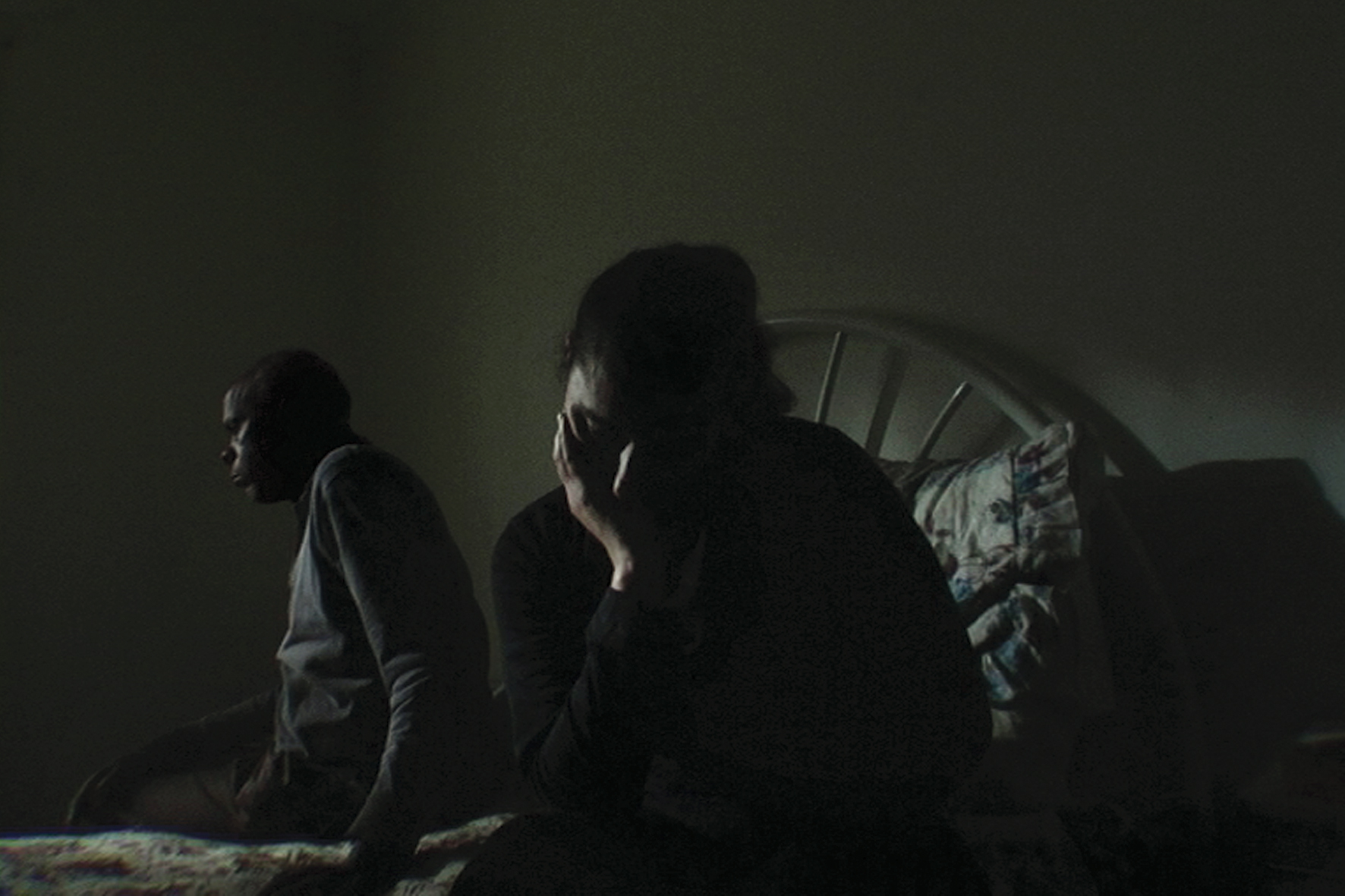
This relation between great art and the art of living of the poor is the whole subject of the film. It finds its spectacular illustration in another episode, the visit to the museum, as far as we can talk of a visit: the film actually transports us without narrative transition to a room in the Gulbenkian Foundation, where we find Ventura leaning against a wall, between Rubens Portrait of Helena Fourment and Van Dyck’s Portrait of a man. In silence, an employee of the museum, black just like the city employee, signs Ventura to leave, before taking a handkerchief and eracing the traces the intruder left on the ground, just like the housing agent before him erased the trace of his face on the white wall of the new appartement. Later he comes back to Ventura, who’s sitting in a rather meditative fashion on a Regency sofa, and makes him leave, still in silence, through the service door. The employee is happy with his work, far away from the cosmopolitan and crooked wildlife of supermarkets. Here, he quietly says to Ventura, we find peace, except when people like us come here, which is rare. Ventura does not reply to his words. Seated above him without looking at him, underneath some garden trees, he talks about the country where he comes from, of the swamp it used to be and the frogs swarming on the domain he has excavated and refurbished, and where he has put gravel and lawn, before pointing with an imperial hand gesture to the place where he fell off a scaffold one day. It’s not about opposing the sweat and pain of museum constructors with the esthetical pleasure of the rich. It’s about confronting history to history, space to space, speech to speech. The treatment of speech actually ruptures with the two preceding films. The fiction of Ossos was under the sign of a certain mutism, that of Tina, the young mother, overtaken by the life she had passed on. In Vanda’s Room assumed, with the appearance of a documentary, the tone of a conversation between four walls. Colossal Youth installs breaks between two different regimes of speech. On one hand, there is the conversation continuing in Vanda’s new room, the room of the mother who’s become slightly more affluent and “bourgeois”, cluttered up by this conjugal bed with supermarket design, continuously filled with the sound of this television set of which we don’t see the screen. Vanda talks about her difficult return to the norm on the same familiar tone as before. Ventura does not converse. Often he remains silent, imposing the somber mass of his silhouet or the force of a look that perhaps judges what it sees or wanders elsewhere, but in any case resists all interpretation. The speech emerging from this silence, seemingly feeding from it, varies between the lapidary formula, similar to an epitath or a hemistich of a tragedy, and lyrical diction. It is this modus that he evokes, behind an interlocutor he doesn’t look at, his departure from Cape Verde on a big plane on 19 August 1972, reminding us of another departure, the one of a poet and his two friends in a small car, on 31 August 1914 *.
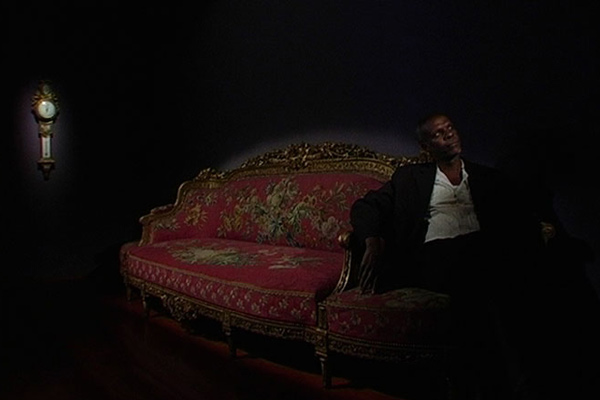
Hearing this well-learned speech seemingly emanating directly from the heart of a being and his history, rather than the lips of a speaker, it is difficult not to think about the art of the filmmakers Pedro Costa has dedicated a film to, Danièle Huillet and Jean Marie Straub. They transformed Vittorini’s narratives in oratorio scores to put them in the mouth of men of the proud people who, while vocalizing the text without looking at any interlocutor, attested to the identical capacity of the poor with work made by skillful hands, noble language and the construction of a new common world. Here we feel, more than in any other film by Pedro Costa, the echo of the cinema lesson of the Straubs. Yet the film presents a dispositive of an ensemble that is different from the poetics and politics of the Straubs. The nobleness of the life of anyone is conveyed here in two different ways: on one hand the conversational modus of In Vanda’s Room, on the other the “literary” modus, which is well suited for this mythical space set out by Ventura’s wanderings between the slums and the new houses, between past and present, Africa and Portugal. But the great speech of which Ventura has the monopoly, at the price of slightly subduing Vanda and her words, is itself constructed in the patchwork modus. This is attested to by the wonderful episode with variations of the letter that gives the film its refrain: a letter addressed by the emigrant to the one who has stayed, at the same time speaking of the everyday of work or suffering, and love promising the loved one one hundred thousand cigarettes, a car, a dozen fancy dresses and a threepenny bouquet. Ventura modules the letter’s recitation in another way in order to teach it to Lento, the illiterate. At times he pronounces it as if lost in his daydreams, at other times with the authority of a teacher hammering the words in an unwilling head. In a sense, this is all the property Ventura has: the literary grandeur of the autodidact who “learns new words every day, beautiful words for you and me alone made to fit us both, like fine silk pyjamas.” Yet Pedro Costa has composed it from two different sources: real letters from emigrants – similar to those of which he was once the mailman and which have led him to Fontainhas – and a letter from a poet, one of the last letters Robert Desnos sent to Youki from the camp of Flöha. The words of the French poet who died in Terezin blend with those of the letters of immigration, to compose a partition of the same sort that Danièle Huillet and Jean Marie Straub distilled from Vittorini’s texts. Lento will never learn the letter, which he doesn’t need anymore anyhow, but in one of the houses devastated by fire, Ventura the madman, the lord, will put, still without looking at him, his hand in his and grants him the tragical dignity, the right to cry for the misfortunes of his friend, just like his friend cries for his own.
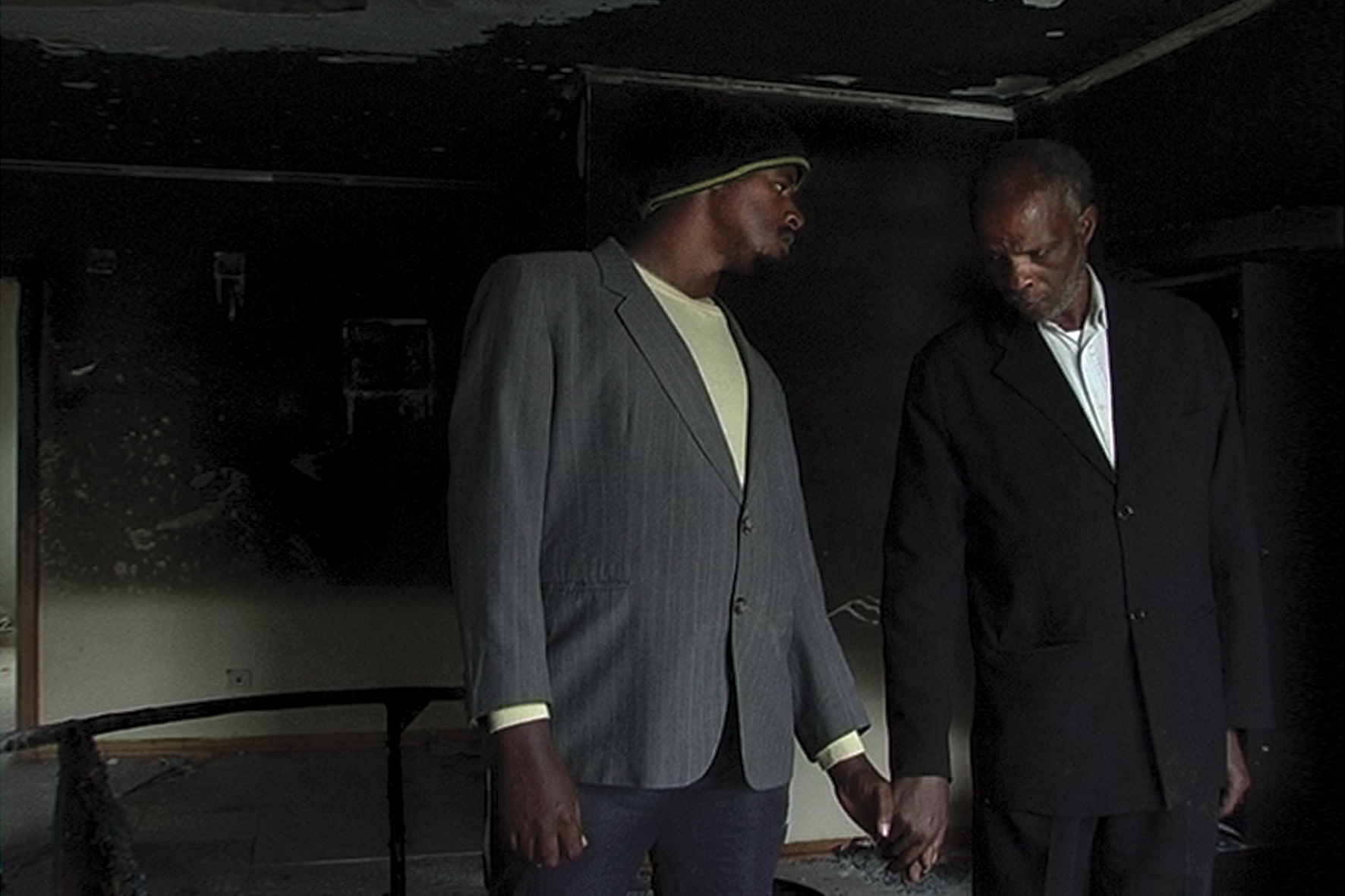
The difference in poetry is also a difference in politics. In order to affirm a political dignity of men of the people identical to their esthetical dignity, the Straubs have done away with the everyday misery of anguish and distress. Their workers and farmers offer us directly, in front of the only forces of nature and myth, some hours of communism, some hours of sensible equality. But Ventura, in spite of the film’s rousing title, does not propose any form of communism, past, present or to come. He remains the stranger untill the end, the one who comes from far away to attest to the possibility for each and every one of having a destiny, and being equal in his or her destiny. In the Straubs’ Vittorini films, the dialectical argument and the lyrical capacity was after all based on the collective epic of an eternal communism. In Pedro Costa’s work there is no epic unity: the political concern can not, in order to sing the communist glory, be dissociated from the laborious birth of any life. The capacity of the poor remains torn between Vanda’s familiair conversation and Ventura’s tragic soliloquy. Colossal Youth does not end with an open horizon of common adventure nor a closed fist of irreconciable rebelliousness. The film ends, like a pirouette, in Vanda’s room where Ventura, the man inventing his children, is assigned the role of babysitter. We can’t really make out if it’s him taking care of Vanda’s little girl, or if it’s the child looking over the dreams of a broken man. The faith in art attesting to the grandeur of the poor – the grandeur of whoever – shines here brighter than ever. But it no longer corresponds with the affirmation of a salute. Perhaps this turn is what has become of irreconciliation, of which Pedro Costa is today’s first poet.
* 1. Cf. Guillaume Apollinaire, ‘La petite auto’, Calligrammes, Gallimard, coll. ‘Poésie’, 1966, p. 67-68.
——————————————————————————————————————————————————————-
Translated by Stoffel Debuysere (Please contact me if you can improve the translations).
In the context of the research project “Figures of Dissent (Cinema of Politics, Politics of Cinema)”
KASK / School of Arts
——————————————————————————————————————————————————————-
Ventura’s Letter
English translation from the Cape Verdean Creole, corresponding to the subtitles on the Eureka! Edition of Colossal Youth
Nha cretcheu, my love,
being together again will brighten our lives for at least thirty years.
I’ll come back to you strong and loving.
I wish I could offer you a hundred thousand cigarettes, a dozen fancy dresses, a car, that little lava house you always dreamed of, a threepenny bouquet.
But most of all, drink a bottle of good wine and think of me.
Here it’s nothing but work.
There are over a hundred of us now.
Two days ago, for my birthday, I thought about you for a long while.
Did my letter arrive safely?
Still nothing from you.
Some other time.
Every day, every minute, I learn beautiful new words for you and me alone made to fit us both, like fine silk pyjamas.
Wouldn’t you like that?
I can only send you one letter a month.
Still nothing from you.
Some other time.
I often get scared building these walls.
me with a pick and cement, you with your silence, a pit so deep, it swallows you up.
It hurts to see these horrors that I don’t want to see.
Your lovely hair slips through my fingers like dry grass.
Often, I feel weak and think I’m going to forget you.
Ventura.